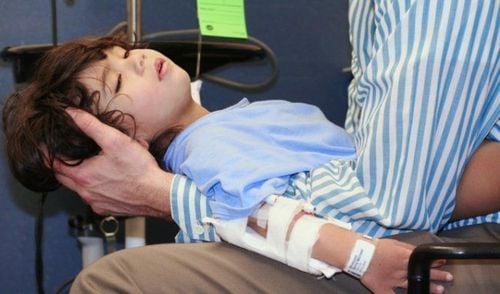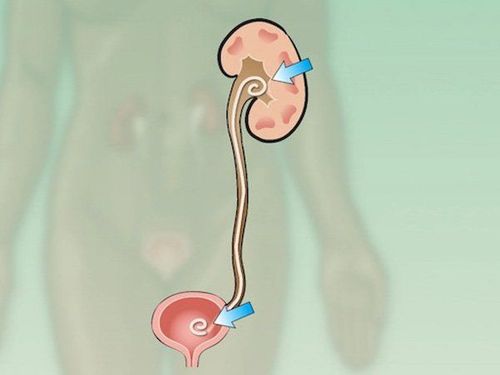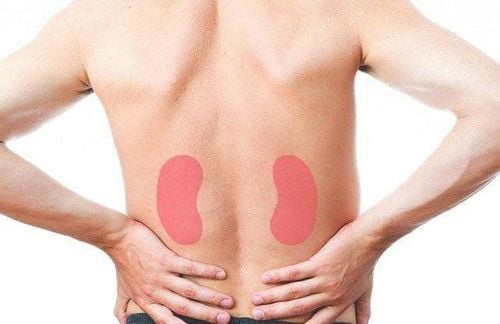This is an automatically translated article.
The posterior venous ureter is an abnormal passage of the ureter causing compression of the inferior vena cava leading to hydronephrosis. If left untreated, the disease can seriously affect kidney function. Therefore, the effective treatment method and the first choice of doctors is laparoscopic surgery to reconstruct the ureter behind the vena cava.
1. Overview of the ureter behind the vena cava
The posterior vena cava is a rare congenital malformation. The ureter was supposed to be outside the inferior vena cava, but it entered the ureter, crossing posteriorly and bending around the vena cava and exiting anteriorly of the inferior vena cava. Wrapping around the inferior vena cava of the ureter causes compression of the inferior vena cava, causing obstruction of the superior ureter and hydronephrosis.
This is a rare congenital condition, but the posterior vena cava ureter usually does not show symptoms until the age of 30-50 years due to obstruction of the ureter causing gradual hydronephrosis. Symptoms of the disease depend on the degree of obstruction and cause urinary tract diseases such as: recurrent urinary tract infections, bloody urine, nephritis or kidney stones.
The disease is often diagnosed based on imaging methods, including computed tomography or X-ray. Based on this result and clinical symptoms, the degree of hydronephrosis, the treating doctor may appoint laparoscopic surgery to reconstruct the ureter after the vena cava.
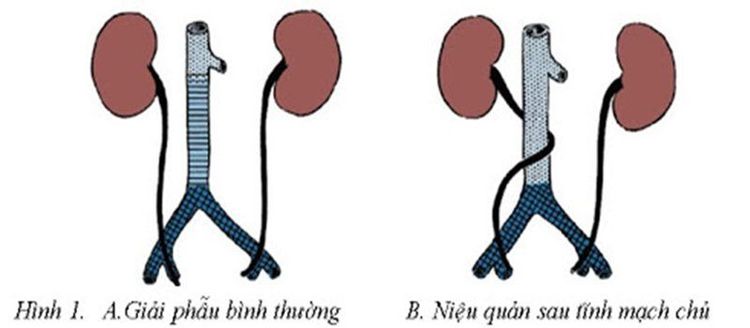
Niệu quản sau tĩnh mạch chủ
2. Endoscopic reconstruction of the ureter behind the vena cava
To perform laparoscopic ureteroscopy behind the vena cava, the doctor will perform a clinical examination to give an indication to proceed. The indicated cases to perform this surgical method were determined to be hydronephrosis due to retro-vein ureter without contraindications (coronary artery disease, valvular heart disease, heart failure disease, bronchiectasis). abdominal wall infection, untreated urinary tract infection)
Patient is checked before participating in surgery. Intravenous urography, computed tomography and tests to evaluate kidney function. It is important for the patient to have any urinary tract infection or systemic illness cleared up before surgery.
Before each surgery, in addition to preparing the patient, equipment, operating room, and surgeon, the preparation of records is extremely important. It includes: minutes of consultation, minutes of surgery approval, medical record, pre-anesthesia and written commitment of the patient's family.
2.1. The procedure of endoscopic ureteroplasty surgery after the vein The patient is under endotracheal anaesthesia. Then, be adjusted to the appropriate position to conduct surgery. With the transperitoneal incision, the patient lies on the 70-75 degree side and is placed on the lower back. With the retroperitoneal incision, the patient lies on the 90-degree side and prescribes the lower back.
Transperitoneal laparoscopic surgery The surgeon places the first trocar next to the upper navel. Two other trocars were placed below the costal margin and above the iliac crest. When the upper ureter is dilated but the vena cava and the lower ureter are normal, surgery allows complete mobility of these two segments. Cut the middle ureter in half, release and bring the ureter posterior to the vena cava anteriorly. Insert the catheter and suture the ureter. Finally, check hemostasis, install drainage, deflate and close the trocar holes.
Retroperitoneal laparoscopic surgery The surgeon places the first trocar between the costal margin and the superior iliac crest and inflates the retroperitoneal space with air. Then, perform ureterectomy, release and anastomosis similar to laparoscopic transperitoneal surgery.
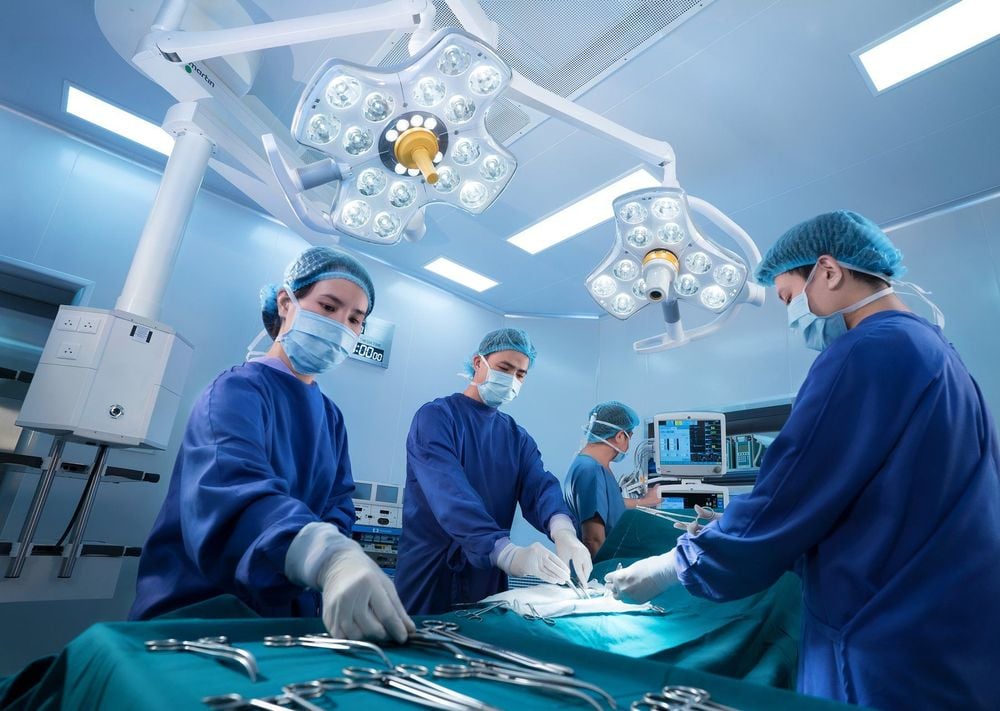
Kỹ thuật mổ nội soi tạo hình niệu quản sau tĩnh mạch
2.2. Monitoring and management of complications During laparoscopic ureteroscopy after vena cava, it is necessary to monitor: pulse, blood pressure, CO2 & O2 levels in the blood, blood loss, possible complications during surgery. surgery (vascular damage, organ damage), surgery time. In cases, complications that are difficult to manage can be converted to open surgery.
After surgery, the patient is still monitored for the patient's general condition, urine status, drainage, incision condition, ...
Some complications may be encountered during surgery such as: bleeding blood due to vena cava injury, visceral injury during ureteral dissection, perforation of the diaphragm-pleura, peritoneal tear. Depending on the condition of the accident, the surgeon may decide to continue laparoscopic surgery or switch to open surgery. Post-operative complications are common such as bleeding at the trocar site, urine leakage, fluid collection at the surgical site, and wound infection.
Like many other laparoscopic surgeries, if endoscopic ureteroscopy after the vena cava is not performed at reputable medical facilities with sufficient modern equipment, surgeons are trained in It can lead to complications during and after surgery. Therefore, when performing endoscopic ureteroscopy after the vena cava, patients need to find out information about the hospital for examination and treatment.
Currently, Vinmec International General Hospital is evaluated as an address for examination, treatment, prevention, screening and screening for many diseases, surgeries are performed by qualified surgeons, well-trained, can minimize possible complications for the patient.
With a system of modern equipment, meeting international standards; Professional service quality will bring satisfaction and comfort to customers. To register for medical examination and treatment at Vinmec International General Hospital, you can contact Vinmec Health System nationwide, or register online HERE.




